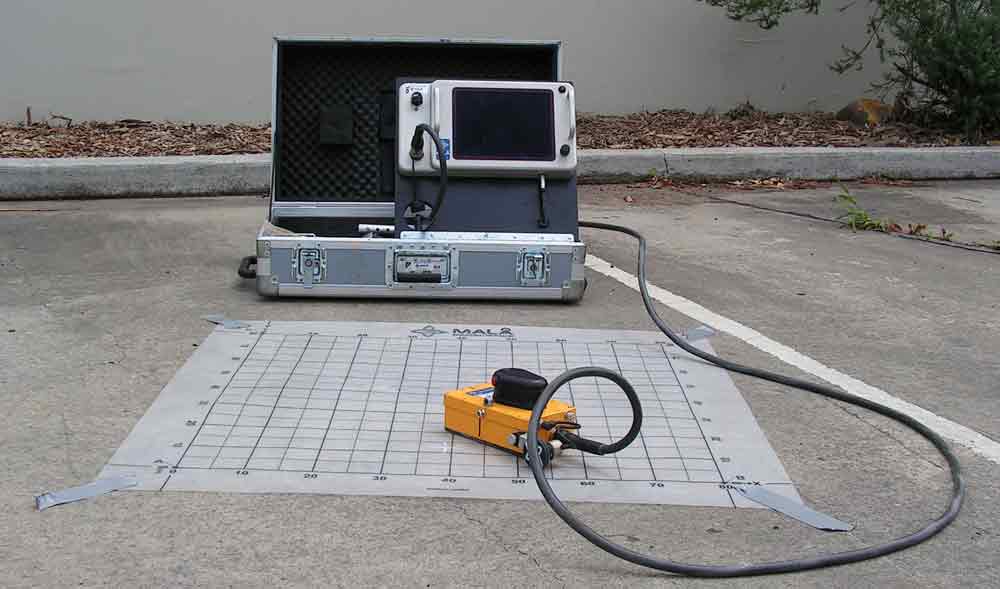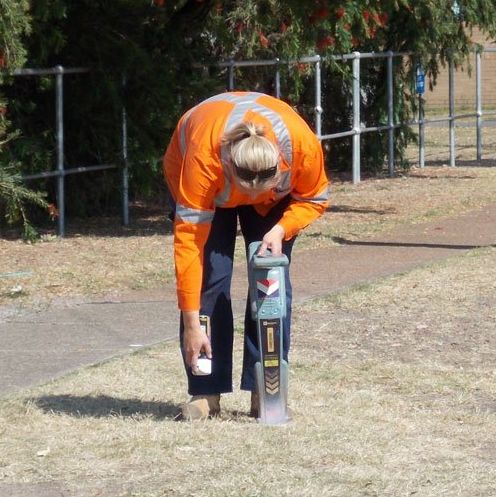Expert Utility Location
Locally recognised for our ground searching systems and non-destructive digging, we offer new and innovative technology to help save time as well as money for our customers. GPR (Ground Penetrating Radar) is used in conjunction with electromagnetic location to provide a more consistent result for metallic and non-metallic services.
Ground Penetrating Radar
Ground penetrating radar uses advanced technology to locate metallic and non-metallic services and structures. Considering there is an increased use of non-metallic materials in construction, the GPR is the tool to use in conjunction with EMF locators to perform a thorough ground search.
The GPR can be used for:
- Utility detection
- Locating underground storage tanks (UST)
- Locating buried pits
- Many more applications
Ground Penetrating Radar has a minimal setup time and can start collecting data within minutes of arrival. See the image beside for an example of a GPR scan. Please note that not all ground conditions are suitable to achieve ground penetrating radar results and each site needs to be individually assessed.
Concrete Scanning
The concrete scanner uses ground penetrating radar technology to non-destructively investigate and provide an image of the concrete and other structures in either 2D or 3D imagery. This procedure aids construction professionals to safely cut, core hole or drill through concrete floors and walls. It is particularly useful for identifying:
- Concrete reinforcement and tension bars
- Services within the concrete
EMF Locating
Electronic location relies on a continuous metallic object (e.g. pipe, cable, traceable rod or wire), which can carry the EMF signal to be detected. In many cases, optic fibres do not contain any conductive or metallic elements that can carry a direct or induced signal. The EMF locator works by transmitting an electromagnetic signal along the pipe or cable, and the receiver handpiece locates the electromagnetic field. When the field is strongest, it is closer to the pipe or cable.
For rapid detection and location of underground facilities, call the experts on 02 4953 1244.
Contact Us
We will get back to you as soon as possible.
Please try again later.
CONTACT US
0409327345
OUR HOURS
- Mon - Fri
- -
- Saturday
- Appointment only
- Sunday
- Closed


